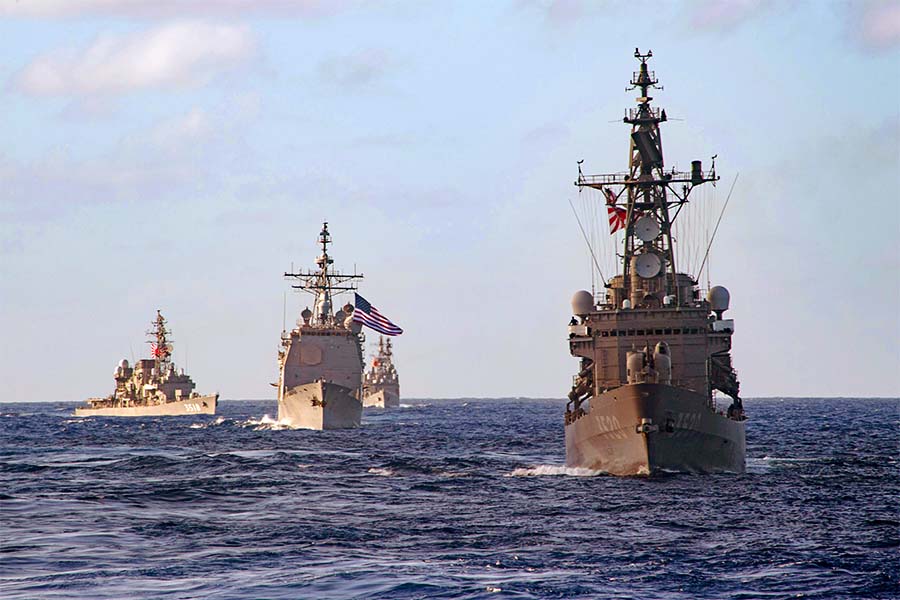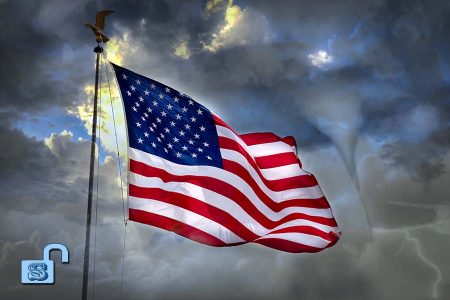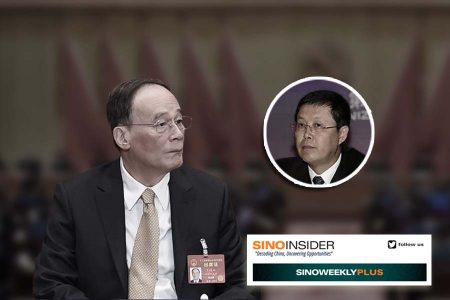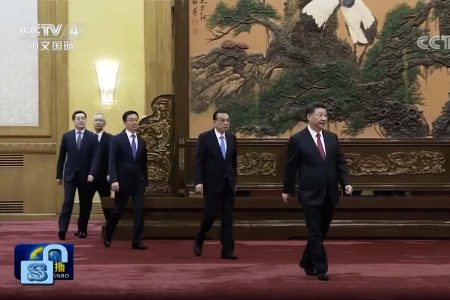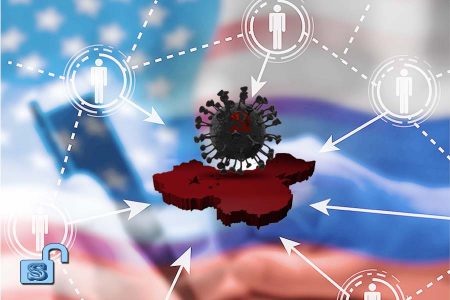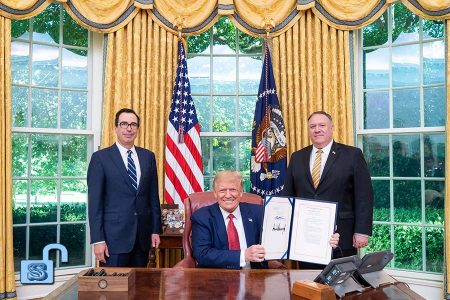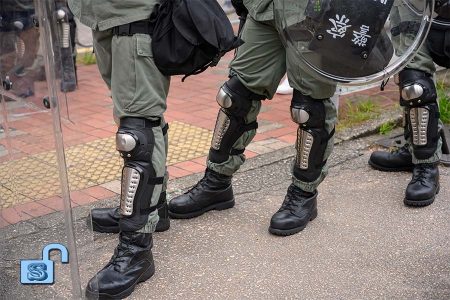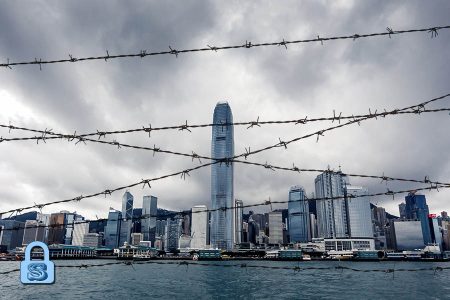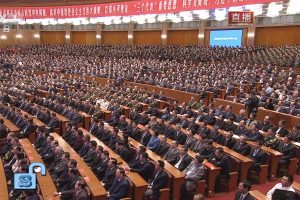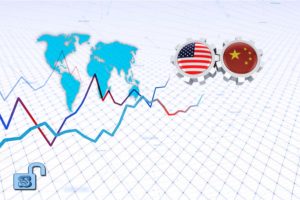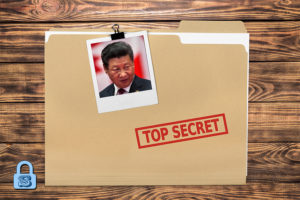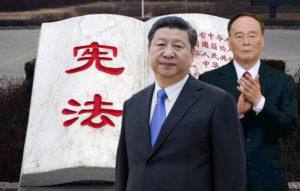◎ The Chinese Communist Party’s aggressive strategy is rallying inspiring global pushback.
Updated on April 20, 2021.
America is not qualified to “speak to China from a position of strength,” declared Yang Jiechi, the Chinese Communist Party’s top foreign affairs cadre, in his opening remarks at the Sino-U.S. summit in Alaska on March 18. Instead of sticking to the allotted two minutes, Yang proceeded to harangue the United States and rattle off Beijing’s accomplishments over the course of 16 minutes. Days later, a Chinese diplomat in Brazil called Canadian prime minister Justin Trudeau a “boy” and a “running dog of the U.S.” And in the first weeks of April, the People’s Liberation Army repeatedly buzzed Taiwan with warplanes, sending as many as 25 into Taiwan’s air defense identification zone on April 13.
The show in Anchorage is “great power diplomacy,” the CCP’s domineering, power-projection approach to external affairs that debuted under the leadership of General Secretary Xi Jinping. International observers refer to the approach more colloquially as “wolf warrior” diplomacy given Chinese diplomats’ penchant for lashing out using bellicose rhetoric at the slightest sign of foreigners “hurting the feelings of 1.4 billion Chinese people.”
However termed, the CCP’s more aggressive approach to foreign matters poses a legitimate concern for the world. The PLA’s modernization, expansion, and increased scope of operations is troubling for the U.S. and its allies as Beijing abuses and subverts the rules-based international order, shirking the duties of a responsible stakeholder. The CCP has signaled its determination to achieve “reunification” with democratic Taiwan before the communist regime’s centennial in 2049, and potentially much earlier. Meanwhile, projects like the Belt and Road Initiative and the promotion of PRC-built 5G and telecommunications equipment often benefit Beijing at the expense of smaller countries, and help the CCP advance its global hegemonic ambitions. Finally, Beijing’s use of boycotts threatens countries and companies in a global environment that is dependent on Chinese demand and manufacturing.
The CCP’s “wolf warrior” approach is not without consequences. Recent developments indicate that the international community is alert to Beijing’s ploy, and is pushing back effectively. Communist China’s latest moves, while intimidating, have seen limited impact or even backfired.
Take the Chinese boycott of Australian coal. In response to Australia assuming an increasingly tough stance towards the People’s Republic of China and calling for an investigation into the origins of the COVID-19 pandemic, Beijing targeted various Australian products with sanctions or import restrictions in the first half of 2020. Australia’s continued “recalcitrance” led Beijing to ban Australian coal starting October 2020. Coal makes up more than half the value of Australia’s exports to China that were impacted by the CCP’s trade sanctions.
Beijing’s coal ban, however, may have affected the CCP regime more than Australia. Australia successfully diverted its coal exports to other countries, particularly to India, which is expected to keep purchasing Australian coal into 2022 due to its high quality and PRC ban-induced lower cost. An analysis by Australian think-tank Lowy Institute found that Australian coal exports to the rest of the world were “running $9.5 billion higher in annualized terms than before the ban” in January 2021. Meanwhile, several Chinese provinces and areas imposed power restrictions or reported power outages in December 2020, or within two months after the Australian coal ban. Small businesses or factories in some areas had to cease operations or shut down production to conserve power. People complained about being cut off from heating or needing to climb many flights of stairs to work because the elevators were out.
A less commonly noticed, but no less significant area where the CCP’s aggressive approach to external affairs has encountered pushback is in the realm of telecommunications technology. State-supported and PLA-linked PRC companies like ZTE and Huawei were fiercely pushing their 5G technology abroad until the Trump administration took action. The administration warned that PRC telecommunications companies and their 5G equipment pose a national security threat to all nations that adopt the technology because the PRC companies in question must obey the CCP and Beijing can potentially access the data those companies collect under Communist China’s security laws. The U.S. sanctioned ZTE in 2018, banned Huawei in 2019, and in 2020, launched a “Clean Network” initiative to get countries to avoid compromised telecommunications equipment suppliers like Huawei.
Huawei is feeling the impact of global exclusion. The company’s sales in North America, Europe, and many other markets fell by double-digit percentages in 2020, according to its annual report released at the end of March. A Huawei executive told U.S. journalists that 2020 was “a really tough year” for the company. On April 15, Romania became the latest country to ban Huawei equipment from its networks. Meanwhile, Huawei has been forced to launch an artificial intelligence pig farming project to find new growth areas to make up for its struggling 5G and smartphone business—a definite climb-down for Huawei founder and former PLA engineer Ren Zhengfei.
The PLA’s increased activity in the Taiwan Strait and the South China Sea this year has also roused international pressure. America has carried out multiple “freedom-of-navigation” operations in the South China Sea and the Taiwan Strait since January. When PLA warplanes were buzzing Taiwan in early April, the U.S. deployed a carrier strike group and Marines amphibious ready group to the South China Sea. In April, the U.S. guided missile destroyer USS Mustin also shadowed the Chinese Liaoning aircraft carrier to within a few thousand yards as the latter and five escort vessels carried out maneuvers in the East China Sea. Meanwhile, Canada and France have dispatched warships to the South China Sea or sailed them through the Taiwan Strait in the first quarter of 2021, while Britain and Germany have announced plans to send naval vessels to the region later this year. Germany’s planned sailing of a frigate through the South China Sea in August will be the first time a warship from the nation will make such a crossing since 2002.
Communist China’s militarism in its surrounding waters is banding together concerned countries. In a March joint statement, the U.S. and Japan “underscored the importance of peace and stability in the Taiwan Strait” and “reiterated their objections to China’s unlawful maritime claims and activities in the South China Sea.” When Japanese prime minister Yoshihide Suga visited Washington in April, he and President Joe Biden issued a joint statement where they “exchanged views on the impact of China’s actions on peace and prosperity in the Indo-Pacific region and the world,” opposed the CCP’s activities in the East China Sea and South China Sea, and repeated their stance on Taiwan.
On April 5, France and Quadrilateral Security Dialogue nations—the U.S., Japan, Australia, and India—began two days of joint naval exercises in the South China Sea. Later that month, France agreed to join India’s Indo-Pacific Ocean Initiative, of which maritime security is a focus. On April 19, the European Union announced an Indo-Pacific plan to increase its influence in the region, protect its interests, and according to news reports, “counter China’s rising power.” EU foreign ministers said that the plan, which is led by France, Germany, and the Netherlands, “considers that the EU should reinforce its strategic focus, presence and actions in the Indo-Pacific … based on the promotion of democracy, rule of law, human rights and international law.”
Beijing has also attempted to flip the narrative as the international community scrutinizes the CCP’s persecution of Uyghurs and other ethnic minorities in Xinjiang. In late March, the Communist Youth League criticized H&M over a September 2020 statement where the company said it would stop sourcing Xinjiang cotton for its products. Subsequently, Chinese celebrities and prominent netizens called for a boycott of H&M and other big brands like Nike and Adidas who have spoken up against using Xinjiang cotton or are part of initiatives that oppose the sourcing of cotton from the region.
Chinese e-commerce outlets removed boycotted products from their offerings, and mainland media outlets even blurred out fashion labels on clothing in their programming. The boycott and appeal to “nationalism,” however, appear to have backfired spectacularly—PRC national sports teams that use Nike or Adidas have not canceled their multi-year contracts; Nike shoes attracted 350,000 subscribers on business-to-consumer online retailers like Tmall and sold out quickly; and young Chinese were spotted forming long queues outside Nike and Adidas stores across China as retailers, fearing the impact of “nationalism”-driven boycotts, began offering steep discounts.
The CCP’s “Great Power Diplomacy,” boycotts, and increased militarism are partly an attempt to actualize its “East is rising, West is declining” propaganda narrative. The Party is also betting that economic coercion and the promise of vast markets in China will stop the international community from challenging the regime’s malign behavior, as those measures have done so consistently in the past. Communist China’s gamble, however, is failing before its eyes, and the world is paying attention.
Beijing is desperate to show the Chinese people and the world that it has brought China out of a “Century of Humiliation.” Instead, the Communist Party’s aggressive strategy is rallying and forging the global anti-CCP coalition.
